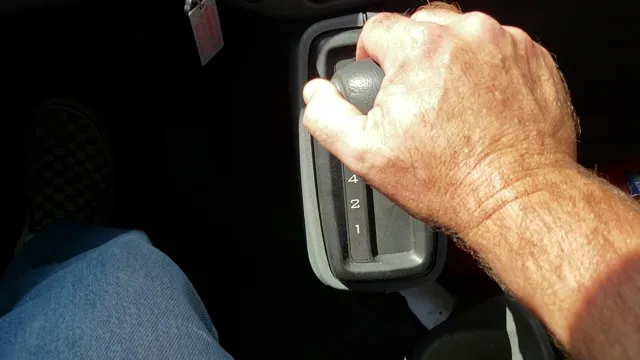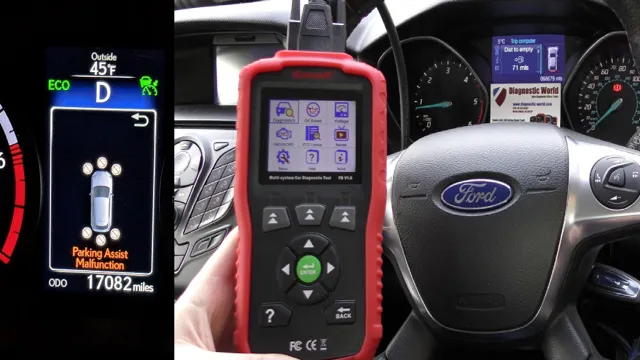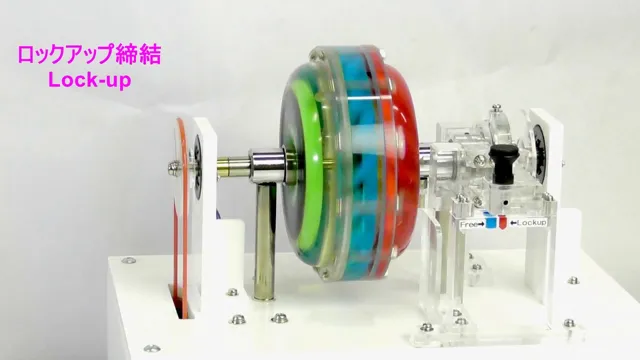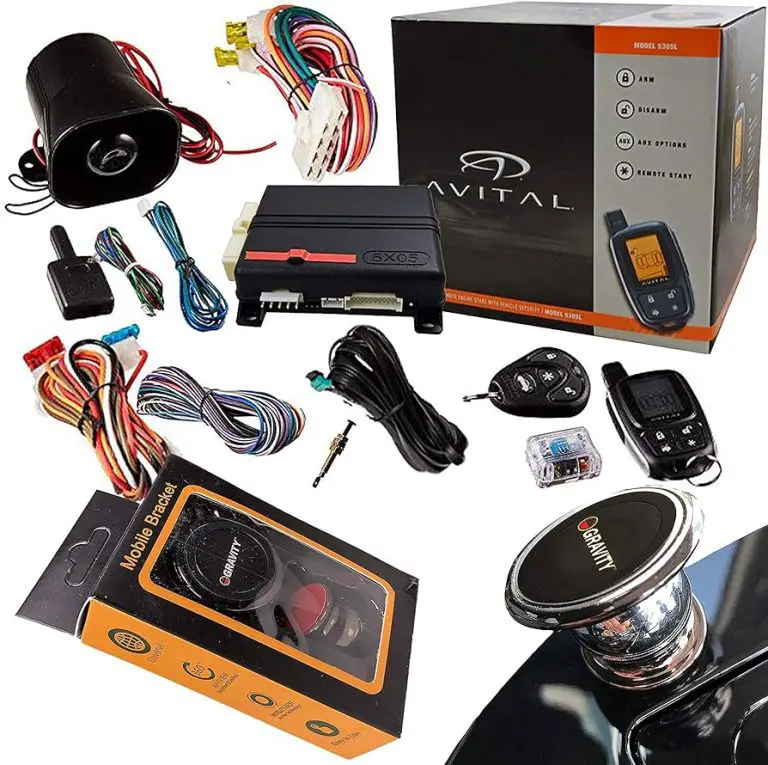Unlock your Braking Power: A Step-by-Step Guide on How to Bypass Brake Fluid Sensor Safely and Quickly
Have you ever experienced trouble with your brake fluid sensor, causing your vehicle to continuously beep and alert you of low brake fluid levels even though you filled it up? It can be a frustrating issue that may seem difficult to resolve, but fear not! Bypassing the brake fluid sensor can be a simple fix, and we’re here to guide you through it step-by-step. Think of the brake fluid sensor as the gatekeeper to your brake system. Its purpose is to indicate when the brake fluid levels are low so you can refill it as soon as possible to maintain optimal braking performance.
However, sometimes the sensor becomes faulty and continues to alert you of low brake fluid despite it being filled to the proper level. In this guide, we’ll show you how to bypass the brake fluid sensor, allowing you to silence those annoying beeps and continue driving without any worries. We’ll cover the necessary tools you’ll need, as well as the steps needed to bypass the sensor.
Whether you’re a seasoned mechanic or just starting out, our step-by-step guide will make bypassing the brake fluid sensor a breeze. So, let’s get started and get you back on the road with peace of mind knowing your brake system is working properly.
Why Bypass the Brake Fluid Sensor?
If you’re wondering how to bypass the brake fluid sensor, there are a few reasons why you might consider this option. The brake fluid sensor is designed to alert you when your brake fluid is low, which is an important safety feature. However, in some cases, the sensor can be faulty and give false readings.
This can be frustrating and can cause unnecessary stress. Additionally, if you perform your own brake maintenance, you may need to bypass the sensor temporarily to complete the job. However, it’s important to keep in mind that bypassing the brake fluid sensor can be dangerous if you’re not careful.
If you’re going to attempt this, make sure you follow the instructions carefully and double-check your work to ensure that your brakes are functioning properly. Overall, bypassing the brake fluid sensor can be a useful option in certain situations, but it should always be approached with caution to avoid any potential safety risks.
Avoiding Costly Repairs
If you’re looking to avoid costly repairs, you might want to consider bypassing the brake fluid sensor. While some might balk at the idea of simply disabling an important safety feature, it’s important to understand why this can actually be a smart decision. Over time, brake fluid can become contaminated with moisture and debris, which can make it less effective at helping your car come to a stop.
If your brake fluid sensor detects this issue, it will alert you to get your brake system checked and potentially replaced, which can be an expensive fix. By bypassing the sensor, you can save yourself the hassle and expense of dealing with a malfunctioning brake system down the line. Of course, you should always make sure to keep an eye on your brake fluid levels and schedule regular maintenance to ensure that your car stays in top shape.
But bypassing the sensor can be a smart decision for those looking to save some money in the long run.
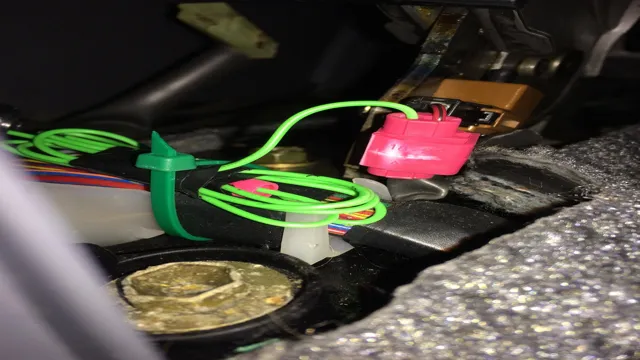
Customizing Your Vehicle
If you’re someone who likes to modify and customize your vehicle, you might have considered bypassing the brake-fluid sensor. This may sound like a good idea, as it can prevent warning lights from constantly flashing on your dashboard when you’ve swapped your brake fluid for a different brand or type. However, I would advise against bypassing the brake-fluid sensor.
This sensor is an essential safety feature that helps you identify any potential leaks or malfunctions in your brake system. Without this sensor, you might not be aware of any potential issues until it’s too late, and you could end up in a dangerous situation. So, while bypassing the brake-fluid sensor might make your dashboard look cleaner or eliminate some annoying warning lights, it’s not worth sacrificing your safety or the safety of those around you.
Know Your Brake Fluid Sensor
The brake fluid sensor is a crucial component in maintaining the safety of your vehicle. It monitors the level of brake fluid in your brake system, signaling to the car’s computer if the level drops below a certain threshold. However, in some cases, the sensor may malfunction, leading to false alarms or a warning light on your dashboard.
If this happens, you may wonder how to bypass the brake fluid sensor. While it is not recommended to bypass safety features of your vehicle, one temporary solution is to unplug the sensor. This will disable the warning light and allow you to drive your car until you can replace the sensor.
However, you should not ignore the issue for long and get the sensor replaced as soon as possible to ensure the safety of your vehicle.
Understanding the Role of the Sensor
The brake fluid sensor is a crucial component of any braking system. The sensor is responsible for monitoring the level of brake fluid in the reservoir and alerting the driver if it falls below the acceptable level. This is important because a low level of brake fluid can affect the performance of the brakes, leading to decreased stopping power and increased stopping distance.
The sensor usually consists of a float mechanism that is connected to an electronic circuit. When the fluid level drops, the float moves downwards and completes the circuit, which in turn triggers the warning light on the instrument panel of the car. It is important to note that the brake fluid sensor only monitors the level of the fluid and not its quality.
Regular checks and maintenance of the brake fluid are necessary to ensure that the braking system is functioning correctly. So, if the brake fluid warning light comes on, it is crucial to have the brake system checked immediately to avoid any potential accidents on the road.
Identifying the Type of Sensor in Your Vehicle
If you want to ensure optimal performance and safety in your vehicle, it’s important to know the type of sensor in your vehicle’s brake system. One important sensor to be aware of is the brake fluid sensor. This small but crucial component is responsible for monitoring the level of brake fluid in your vehicle’s system.
When the brake fluid level becomes too low, the sensor sends a signal to your vehicle’s computer, which then alerts you through your dashboard warning lights. By keeping an eye on your brake fluid levels and responding promptly to any warning signals, you can help prevent serious brake problems and ensure the safety of you and your passengers. Don’t overlook the importance of your brake fluid sensor – it could be the difference between a close call and a dangerous accident.
Bypassing the Sensor: Precautions and Requirements
If you’re looking to bypass the brake fluid sensor, there are some precautions and requirements that you need to consider first. The most important thing to keep in mind is that tampering with the sensor can put you and others on the road at risk. It’s crucial to ensure that your brakes are functioning correctly at all times, so any modifications should be approached with caution.
Additionally, it’s essential to check with local laws and regulations before attempting to bypass the sensor, as doing so may be illegal in your area. If you do decide to move forward, you’ll need to have a good understanding of your vehicle’s brake system and be skilled in working with automotive electronics. Finally, it’s important to remember that bypassing the brake fluid sensor is not a long-term solution and should only be done as a temporary fix while you address the underlying issue with your brakes.
Tools You Need to Bypass the Sensor
If you’re interested in bypassing sensors, it’s essential to take all necessary precautions to ensure safety and success. For starters, bear in mind that manipulating electronic sensors poses some danger: tampering with a device could cause unintended harm to yourself and others. Therefore, it’s advisable to educate yourself on the type of sensor involved, identify potential risks associated, and take necessary measures to mitigate the danger.
Additionally, you’ll need the right tools, including screwdrivers, wire cutters, and pliers, to disassemble the sensor and potentially reassemble it after bypassing. Keep in mind that the required tools may vary depending on the kind of sensor, so thorough research is necessary before taking apart any device. Finally, always exercise the utmost care and caution, and consider seeking professional help if you’re not entirely sure of what you’re doing.
By taking necessary precautions and using the right tools, you’ll be on your way to bypassing sensors like a pro.
Safety Precautions to Take Before Bypassing
Bypassing safety sensors can be a risky task that requires preparation and understanding of the safety precautions involved. Before bypassing the sensor, it is crucial to determine the appropriate measures to ensure safety. First, disconnect the power supply to the equipment to avoid any electrical hazards.
Secondly, examine the system to make sure that the bypass is the only solution to the problem. If there are other methods, try them out before proceeding with the bypass. After ascertaining that bypassing is the best solution, ensure that the required safety devices are in place before proceeding.
These could include emergency stop buttons, lockout/tag-out procedures, and protective shields or guards. Proper training is necessary for anyone involved in the bypassing process to minimize risks. Finally, remember that bypassing safety sensors is not a permanent fix, and it should only be done in emergencies.
A permanent solution should be sought to avoid future risk of accidents. With these precautions in mind, bypassing safety sensors can be done safely.
Step-by-Step Guide to Bypassing the Brake Fluid Sensor
If you’re in the middle of performing a DIY brake fluid change or have a faulty brake fluid sensor, you may need to know how to bypass the brake fluid sensor. Luckily, it’s a fairly easy process that can be completed by following these simple steps. First, locate the brake fluid sensor, which is usually located on the master cylinder or reservoir.
Next, remove the sensor from the master cylinder and disconnect the wiring harness if present. Then, use a jumper wire to connect the two terminals on the sensor and re-install it onto the master cylinder. Finally, start up your car and check to make sure that the brake fluid warning light is no longer illuminated.
Remember to exercise caution when working with your braking system and consult your vehicle’s manual if you’re unsure about any steps in the process. With a little bit of know-how, you can easily bypass your brake fluid sensor and get back on the road safely.
Step 1: Locate the Brake Fluid Sensor
Bypassing the brake fluid sensor can seem like a daunting task, but with some careful guidance, it’s relatively simple. The first step is to locate the brake fluid sensor. This sensor is usually located near the brake fluid reservoir, which can be found under the hood of your car.
Once you’ve located the sensor, you need to disconnect it from the wiring harness. This can be done by carefully unplugging its connector. After you’ve disconnected the sensor, you’ll need to find a bypass plug that matches the sensor.
This plug can be obtained at an auto parts store or online. Once you have the bypass plug, attach it to the wiring harness that you disconnected the sensor from. Make sure that it is securely attached and that the wiring harness is protected from any electrical interference.
When you turn on the car, it should recognize that the brake fluid sensor is operating correctly, and you’ll be able to start your car. By following these simple steps, you can bypass the brake fluid sensor and be back on the road in no time.
Step 2: Disconnect the Sensor from the Electrical System
Bypassing the brake fluid sensor can be a daunting task if you don’t know where to start. In this step-by-step guide, we will walk you through the process of disconnecting the sensor from the electrical system. First, locate the sensor, which is typically located on the master cylinder.
Once you have located it, use a wrench or socket to carefully remove the electrical connection. Make sure to unplug the connector gently and avoid damaging the wires. If you’re unsure which wires to disconnect, refer to your owner’s manual or consult a mechanic.
Once you have disconnected the sensor, you can proceed with bypassing it. However, it’s essential to keep in mind that bypassing the brake fluid sensor will disable a critical safety feature, so proceed with caution. With this step done, you’re one step closer to bypassing the brake fluid sensor and ensuring your safety on the road.
Step 3: Bypass the Sensor Depending on Type
Bypassing the brake fluid sensor can be a daunting task, but with the right tools and steps, it can be done with ease. The steps to bypass the sensor will vary depending on the type of sensor in your vehicle. In most cases, you will need to locate the sensor and remove it from the brake system.
This may require some disconnection of wires, so be sure to take your time and carefully maneuver around any obstacles. Once the sensor is removed, you will need to bypass it by connecting the wires that were disconnected earlier. This can be done using a simple electrical connector or by splicing the wires together.
Always make sure to use proper electrical tape and secure the connection to prevent any future problems. By following these steps, you can successfully bypass the brake fluid sensor and get your car back on the road without any issues.
Step 4: Test the Brake System and Check for Faults
Bypassing the brake fluid sensor can be a daunting task, but with a step-by-step guide, it can be done easily. Once you have tested your brake system and checked for any faults, it’s time to address the issue of the brake fluid sensor. The first step is to locate the sensor, which is typically near the brake master cylinder.
Next, disconnect the wiring harness from the sensor by pressing the tab on the connector and pulling it apart. After this, use a jumper wire to bypass the sensor by connecting the two wires on the sensor together. Finally, turn on the ignition to see if the brake warning light on the dashboard turns off.
If it does, then the sensor has been successfully bypassed. Keep in mind that bypassing the sensor is only a temporary solution and getting the sensor replaced should be on your to-do list. With this simple guide, you can easily bypass the brake fluid sensor and get back on the road without any warning lights flashing.
Potential Risks and Consequences
Attempting to bypass a brake fluid sensor can result in various potential risks and consequences. The brake fluid sensor serves a critical role in ensuring the safety of a vehicle, as it detects the level of fluid in the brake system. Without a functioning sensor, the brakes may fail to work correctly, resulting in a compromised ability to stop the vehicle and posing a significant risk to the driver and passengers.
Additionally, tampering with the brake fluid sensor can also lead to serious legal ramifications, as it is illegal to modify any part of a vehicle’s safety mechanism. Ultimately, the consequences of attempting to bypass a brake fluid sensor far outweigh any perceived benefits, and it is vital to prioritize safety and adhere to proper vehicle maintenance practices to ensure optimal performance and protection on the road.
Failing to Pass Vehicle Inspections
Failing to pass a vehicle inspection can put you and other drivers on the road at risk. It’s important to make sure that your vehicle is in good condition and up to standards before hitting the road. Depending on the state, failing to pass a vehicle inspection can result in consequences such as fines, license suspension, or even a revoked registration.
A vehicle inspection is critical to ensure that your car meets safety and emissions standards and protects you and others on the road. Think of it like visiting the doctor for a routine checkup. It might be inconvenient, but it’s necessary to keep yourself healthy.
So, make sure to keep up with your vehicle’s maintenance and take it for an inspection periodically. It may save you a lot of headaches and money in the long run.
Compromising the Safety of Your Vehicle
Compromising the safety of your vehicle can lead to serious consequences that can endanger your life and the lives of others on the road. One of the potential risks is mechanical failure, which can occur when essential components or systems are not maintained properly. This can include brakes, tires, steering, and suspension, among others.
A malfunction in any of these parts can cause a loss of control, resulting in a crash. Additionally, compromising the safety of your vehicle can also lead to legal consequences. If you’re involved in an accident and it’s determined that your vehicle was not properly maintained or repaired, you may be held liable for damages or injuries.
It’s important to take the necessary precautions to ensure the safety of your vehicle and all those who share the road with you. Regularly schedule maintenance, check tire pressure and tread wear, and address any issues promptly to avoid potential risks and consequences. Remember, safety should be a top priority when it comes to your vehicle.
In Conclusion
While we do not encourage tampering with safety features on your vehicle, we understand that some car enthusiasts may want to bypass the brake fluid sensor. If you’re feeling particularly daring, you could try pouring a bottle of oil on top of your brake fluid to “confuse” the sensor. However, we highly recommend opting for the safer route and simply replacing the brake fluid sensor.
Remember, taking shortcuts may lead to unintended consequences – and that’s not a risk worth taking when it comes to your safety on the road!”
Knowing When and When Not to Bypass the Sensor
When you come across a sensor that isn’t working correctly, it can be tempting to bypass it to get things moving again. However, there are potential risks and consequences to consider before taking such action. First and foremost, bypassing the sensor can compromise safety measures in place to prevent accidents.
If the sensor is supposed to sound an alarm in the event of a malfunction, bypassing it can lead to serious harm if that alarm is not sounded. Additionally, bypassing the sensor can also lead to system damage, as it’s likely that the sensor is in place to prevent damage to the system. Ultimately, always weigh the risks and consequences before deciding to bypass a sensor.
It’s worth taking the time to investigate the cause of the issue and finding a way to solve it without compromising safety or risking damage to your system.
Ensuring Proper Maintenance and Safety of Your Vehicle
Proper vehicle maintenance is essential for avoiding potential risks and consequences. Neglecting to properly maintain your car can lead to a variety of issues, including accidents, breakdowns, and costly repairs. Regular maintenance checks can help detect problems before they become more serious, such as worn brake pads or a malfunctioning transmission.
It’s crucial to ensure that your vehicle’s tires, brakes, steering, and suspension are all checked frequently to prevent accidents caused by component failure. Poorly maintained engines can also cause overheating, which could result in engine failure, smoke, or even fire. Not to mention, skipping oil changes could drastically reduce engine performance and lifespan, leaving you with a costly repair bill.
Overall, regularly scheduled maintenance and safety checks are a smart way to avoid potential risks and ensure your vehicle runs optimally for years to come.
FAQs
What is a brake fluid sensor?
A brake fluid sensor is a component in the braking system that monitors the level of brake fluid in the reservoir.
Why would someone want to bypass their brake fluid sensor?
Some people may want to bypass their brake fluid sensor if they have added a different type of brake fluid to their system and the sensor is not compatible, or if the sensor is malfunctioning and causing warning lights to appear on the dashboard.
Is it safe to bypass the brake fluid sensor?
Bypassing the brake fluid sensor can be potentially dangerous as it may prevent the warning light from coming on if the system is low on brake fluid. It is recommended to replace or repair the sensor rather than bypassing it.
How can someone bypass their brake fluid sensor?
We do not recommend bypassing the brake fluid sensor. It is always recommended to consult a professional mechanic who can diagnose and fix the issue properly.


